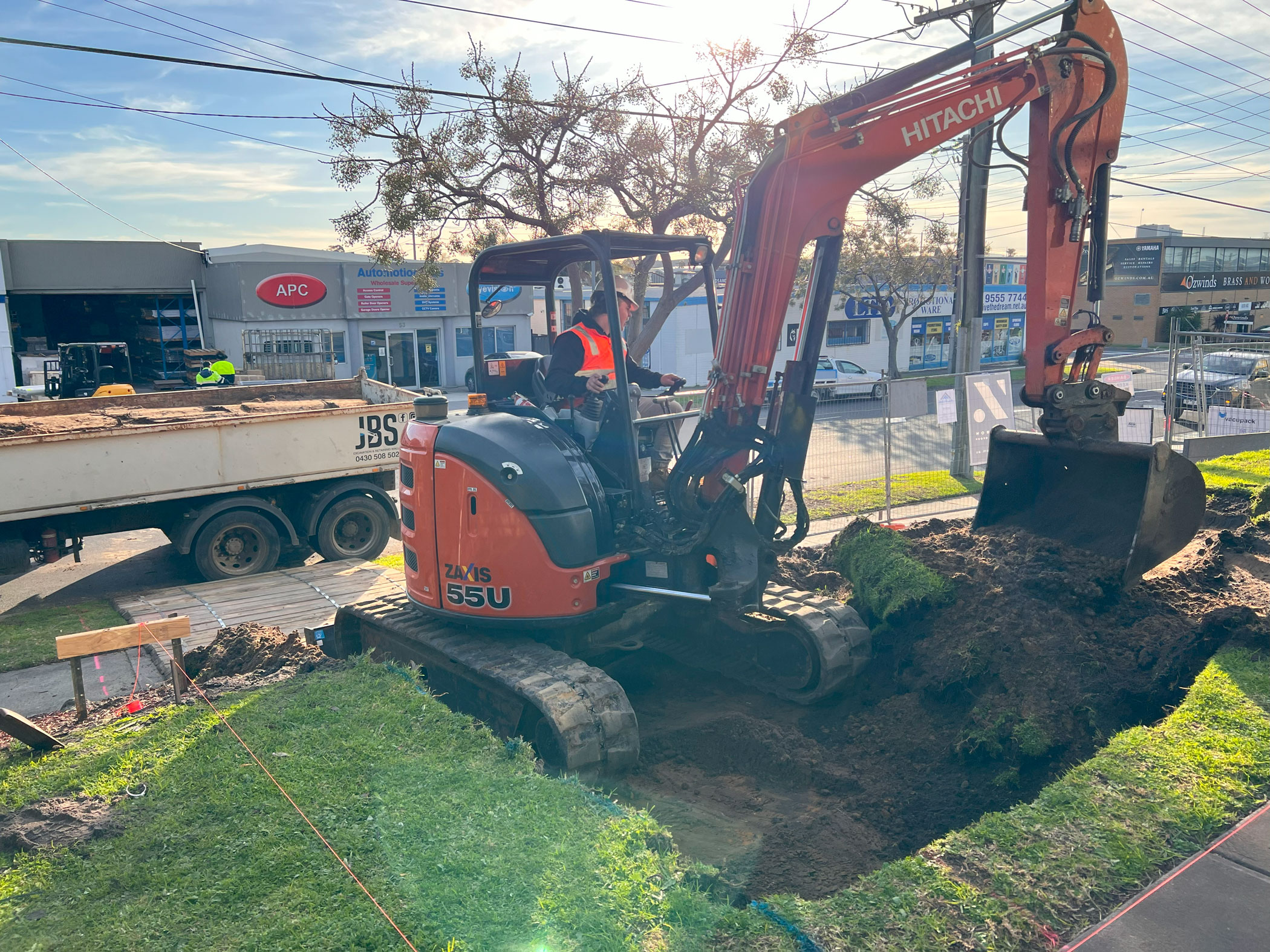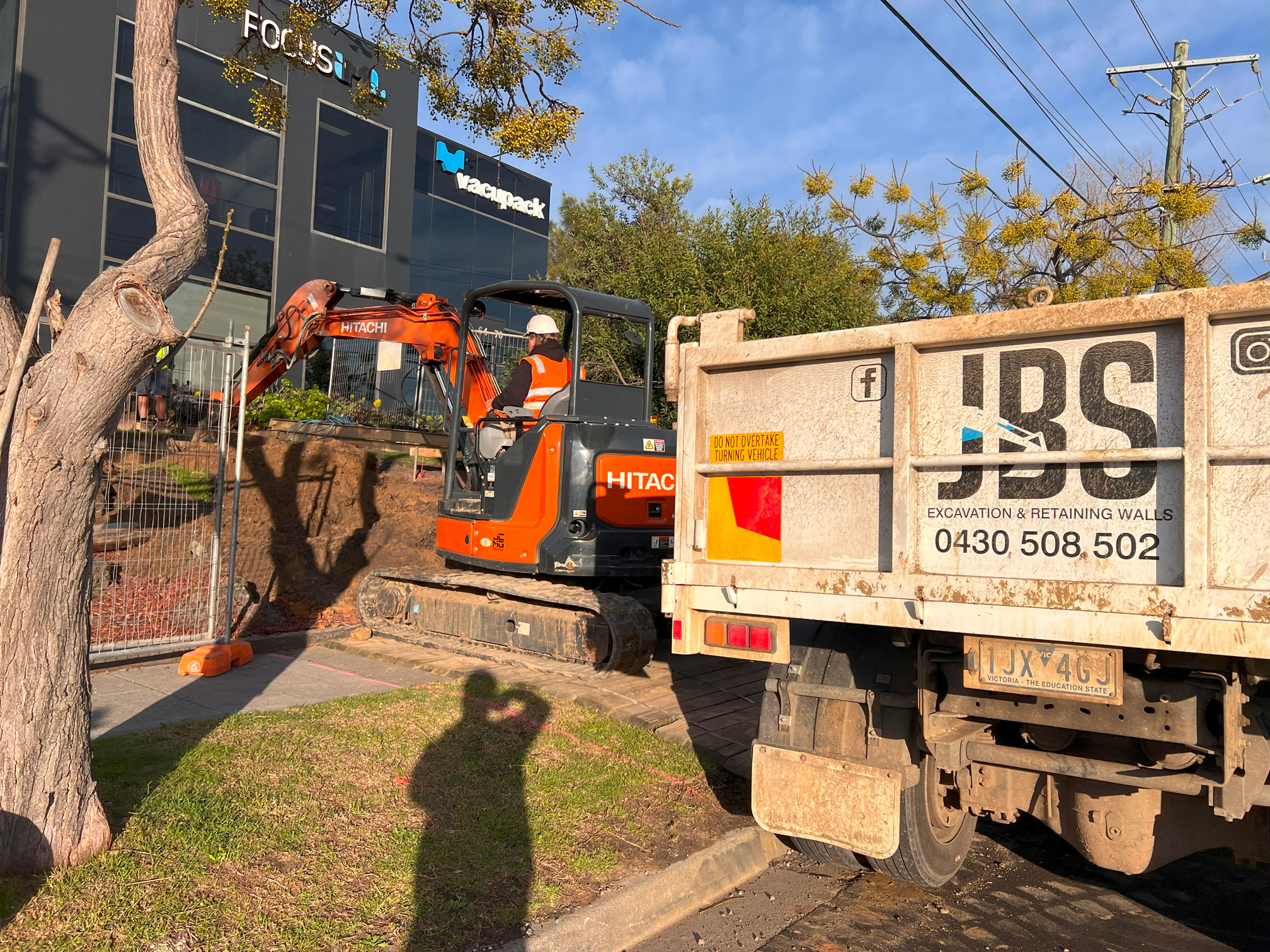From residential builds to commercial developments, excavation lays the foundation for every successful construction project. Whether you're preparing a block for a new home, digging trenches for drainage, or reshaping a sloped backyard, excavation work provides the structure, stability, and access needed to move forward with confidence.
Across Victoria’s Mornington Peninsula, where coastal conditions, clay soils, and undulating blocks are common, excavation services must be adapted to suit local landscapes and council requirements. Understanding the different types of excavation available and when to use them helps homeowners, builders, and developers make informed choices that support safe and efficient construction outcomes.

Excavation involves a range of specialised services that support construction, landscaping, and drainage needs. On the Mornington Peninsula, with its coastal soils, sloped blocks, and varied land use, the right excavation method depends on the project type, site conditions, and local council requirements. Understanding what each service involves helps prevent issues such as poor drainage, soil movement, or foundation instability later in the project.
This is usually the starting point for any project involving new construction or major landscaping. It includes removing trees, shrubs, surface debris, and unwanted structures, followed by grading the land to create a level and stable base. In areas with undulating terrain, site preparation may involve cut and fill techniques to balance the ground. Good preparation helps prevent water runoff problems, shifting soils, or delays once construction begins.
Trenching is used to install underground services such as stormwater pipes, water lines, gas connections, electrical conduits, and irrigation. Trenches need to be dug to precise depths and slopes to ensure proper drainage or flow. On residential blocks, trenching may need to work around existing services, gardens, or structures. For safety and compliance, accurate location of existing utilities is a must before any digging begins.
Foundations must be stable and suited to the soil conditions of the site. Excavation for footings or slabs is done to specific depths, widths, and levels to support the structure above. On the Mornington Peninsula, reactive clay soils can expand or contract with changing moisture levels, which makes correct foundation preparation even more important. Additional reinforcement or deeper excavation may be required depending on the soil profile.
Excavating for a pool involves more than just digging a hole. The shape, depth, and position of the pool need to align with the design and comply with safety standards. Drainage must also be considered, especially in areas with high water tables or clay-based soils. In established neighbourhoods with limited space, mini-excavators or hand-digging may be needed to get the job done without disturbing nearby structures.
Some sites contain buried boulders or dense rock layers that cannot be removed with standard digging equipment. Rock excavation may require rock saws, hydraulic hammers, or blasting in extreme cases. It is often more time-consuming and costly, but necessary when solid rock is encountered. Planning for this early can prevent unexpected delays during construction.
Drainage excavation involves digging trenches or channels to manage surface and subsurface water. This includes installing spoon drains, ag drains, pits, and soak wells to redirect water away from buildings and prevent pooling or erosion. Good drainage helps protect foundations, reduce water damage, and maintain the usability of outdoor areas during heavy rain.
To build a retaining wall, the land must first be excavated and shaped to ensure the wall is positioned correctly and has a stable base. This often involves cutting into a slope, compacting the subgrade, and preparing a trench for the wall’s footings. Proper excavation also includes space for behind-wall drainage to relieve pressure and reduce the chance of wall movement or failure.
Excavating for a driveway or access track means more than just clearing a path. The surface must be levelled, shaped for runoff, and compacted properly before adding crushed rock or road base. On steeper blocks, excavation may also involve retaining or banking to ensure the driveway remains safe and functional in wet conditions. This is especially important for properties with long, narrow, or sloped driveways.
Landscaping often calls for small-scale excavation to reshape garden beds, level lawns, or create terraces. Even these tasks require careful planning to avoid drainage issues or soil erosion. Landscaping excavation may also involve installing garden edging, outdoor steps, or footings for pergolas and seating areas.
Excavation work is required across a wide range of property types, but the demands of residential and commercial projects are quite different. Each presents its own challenges in terms of access, scope, regulations, and coordination. Understanding these differences helps clarify what each type of excavation typically involves and why methods may vary.
Residential excavation usually focuses on preparing land for new homes, extensions, outdoor structures, or landscaping. These projects are generally smaller in scale but can be more complex due to site constraints. Many homes on the Mornington Peninsula are built on sloped or irregular terrain, which requires tailored solutions to ensure stability, drainage, and ease of access.
Common residential excavation tasks include:
Tight access is often a factor, especially in older neighbourhoods or properties with established landscaping. Machinery selection must suit the site, and the operator must work carefully to avoid damaging existing structures, fencing, or underground services. Soil types such as sandy loam and reactive clay can also influence the depth of excavation, drainage requirements, and how spoil is managed.
Commercial excavation involves large-scale sites such as schools, shopping centres, factories, medical facilities, and civil works. These projects typically require deeper excavations, broader site cuts, and extensive trenching for multiple utilities. The work often involves several contractors working simultaneously, which requires careful scheduling and adherence to strict timelines.
Tasks may include:
Regulatory oversight is often more extensive on commercial sites. Safety documentation, traffic management plans, environmental protection measures, and compliance reporting are usually required. Excavation on commercial projects may also need to meet engineering specifications and tolerances set by architects, civil engineers, or local government.
By understanding the context and expectations of each project type, contractors and property owners can better plan for excavation works and ensure smoother project delivery.

Excavation is often viewed as a basic step in construction or landscaping, but it is one of the most important. When excavation is done well, it provides a stable foundation, proper drainage, and long-term structural support. When done poorly, it can result in safety hazards, property damage, and costly repairs. Understanding the role of professional excavation can help prevent these problems before they arise.
Every site has unique ground conditions. On the Mornington Peninsula, for example, soil types range from sandy coastal soils to reactive clay and rocky terrain. Each type behaves differently when disturbed. Sandy soils may shift or collapse without proper support, while clay soils expand and contract depending on moisture levels. A professional excavator assesses the soil before digging and adjusts techniques accordingly. This might include reinforcing the excavation site, adjusting compaction processes, or altering the depth and shape of cuts to ensure long-term stability.
Most properties contain underground services such as water pipes, gas lines, electrical conduits, or telecommunications cables. Damaging any of these can lead to serious safety risks, expensive repairs, and project delays. Professional excavation includes locating and protecting existing services before any digging begins. This may involve using cable locators, working with survey plans, or consulting utility providers to confirm locations. Excavators with the right experience know how to dig around existing infrastructure safely and efficiently.
Excavation often takes place close to existing buildings, fences, retaining walls, and driveways. If done carelessly, digging too close to these features can undermine their foundations and cause cracking, movement, or collapse. Professional excavators assess how close they can safely work and use appropriate support methods, such as battering back soil, shoring up walls, or adjusting excavation depth and angle. These precautions protect both the immediate project and the surrounding property.
There are various rules and regulations that govern excavation in Victoria, especially in areas like the Mornington Peninsula that have environmental sensitivities or heritage considerations. Erosion control, sediment barriers, noise restrictions, and safe machinery operation all form part of compliance. Professional excavators are familiar with these requirements and factor them into the planning and execution of the job. This ensures the work is not only safe and legal but also respectful of the surrounding environment.
Choosing the right equipment for the job saves time and reduces site impact. Small residential sites may require compact excavators or hand-digging tools, while larger jobs call for heavy machinery. Professional operators understand how to match the equipment to the terrain, access constraints, and specific tasks. This not only increases efficiency but also helps prevent over-excavation, soil compaction issues, and accidental damage to nearby structures or services.
Excavation is often seen as a means to an end—something that needs to be done before the real construction begins. However, strategic excavation can directly increase a property’s functionality, safety, and long-term value. From improving usability to preventing future problems, well-executed excavation work lays the groundwork for both present and future benefits.
On sloped or uneven blocks, excavation can transform difficult terrain into flat, usable land. This creates opportunities for new structures such as garages, sheds, patios, or outdoor entertaining areas. Even a simple site cut can open up valuable space that previously had limited use. By reshaping the land, property owners can make better use of their site and increase its overall practicality and appeal.
Excavation allows for controlled shaping of the land prior to installing retaining walls, garden beds, or tiered landscaping. Creating stable levels helps prevent erosion and allows for efficient use of space in gardens and outdoor living areas. Proper excavation also ensures retaining walls are structurally sound and supported by suitable foundations and drainage systems. This adds both aesthetic and structural value to the property.
Poor drainage is one of the most common causes of structural issues in homes. Water that pools near foundations can lead to soil movement, dampness, mould, and even foundation cracking. Excavation for drainage—whether through spoon drains, ag pipes, or soak wells—directs water away from problem areas and protects the long-term integrity of the site. This not only helps maintain the property’s condition but also reassures future buyers that the site has been professionally managed.
Many high-value additions begin with excavation. Pools, outdoor kitchens, driveways, and garden structures all require stable ground and clear space. Excavation ensures these features are properly supported and integrated with the rest of the property. Even simple tasks like levelling a lawn or expanding a driveway can improve accessibility and enhance the overall appearance of the site.
A well-graded and cleanly excavated site immediately makes a property look more refined and well cared for. Defined edges, tidy levels, and proper runoff management all contribute to stronger first impressions. Whether a property is being sold, renovated, or simply improved for long-term enjoyment, a clean and functional layout adds real value. This is especially important in areas like the Mornington Peninsula, where presentation often plays a key role in marketability.
Excavation is more than just digging. It is a skilled process that shapes land for safety, function, and long-term stability. Whether preparing a block for a new build, installing drainage, or reshaping a sloped yard, proper excavation ensures the groundwork is set for everything that follows.
Excavation in Mornington Peninsula requires careful planning and an understanding of local site conditions. With varied terrain, coastal exposure, and clay-rich soils, each project demands a tailored approach that suits the environment and meets council requirements. Every aspect, from trenching and site levelling to rock removal and retaining wall preparation, contributes to a site that is safe, durable, and ready for further development.
By understanding the different types of excavation services and their purpose, property owners, builders, and project managers can make informed decisions that improve outcomes. Well-executed excavation reduces risks, improves property usability, and adds lasting value to the finished result.